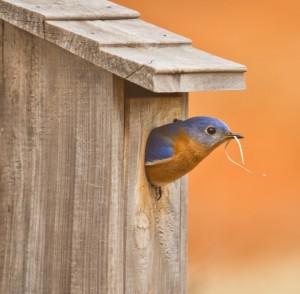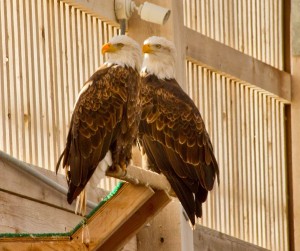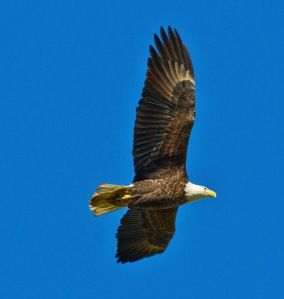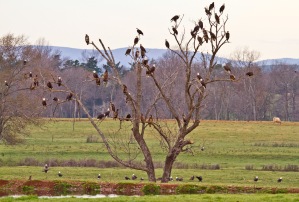 The Oklahoma Wildlife Conservation Commission has approved a final Oklahoma Lesser Prairie Chicken Conservation Plan with a goal to keep the iconic prairie bird off of the Endangered Species list and ultimately increase its presence in Oklahoma.
The Oklahoma Wildlife Conservation Commission has approved a final Oklahoma Lesser Prairie Chicken Conservation Plan with a goal to keep the iconic prairie bird off of the Endangered Species list and ultimately increase its presence in Oklahoma.
Photo courtesy of Wikipedia Commons.
The plan was presented for approval to the Commission at its November meeting by Russ Horton, wildlife research supervisor for the Oklahoma Department of Wildlife Conservation.
The lesser prairie chicken population trend in Oklahoma began to drastically decline in the late 1980s and has remained low, believed to be in part due to land use changes and habitat fragmentation that are not suitable for the birds. The current population estimate of lesser prairie chickens in Oklahoma is about 37,000 birds.
A proposed listing of the lesser prairie chicken as either “endangered,” “threatened” or “not warranted” is expected from the U.S. Fish and Wildlife Service by late November, after which a final ruling would be offered by Sept. 2013.
According to Horton, the plan that was approved by the Commission will help achieve the recovery of lesser prairie chickens needed to either avoid an endangered listing or, in the event that the bird is listed, move more quickly toward de-listing.
Although the Department has continuously been working to conserve and benefit lesser prairie chickens for years through a range of approaches centered on habitat acquisition, restoration and enhancement, the official action plan was completed in October. Under the plan, the Wildlife Department will continue protect, enhance and restore prairie chicken habitat while addressing other factors leading to their decline.
The plan will focus on 15 “core areas” in western and northwest Oklahoma averaging 50,000 acres each. The Department will identify research needs and management actions to support responsible development as well as develop incentives for landowners to improve and restore suitable habitat in those core areas.
“In summary, we’re looking at 15 core areas-approximately 750,000 acres,” Horton said.
The short-term goal is to stabilize lesser prairie chicken populations in Oklahoma and reverse the decline by targeting a population goal of 5,000 birds in the 15 core areas.
“Ultimately, we expect that we have potential for possibly up to 10,000 lesser prairie chickens in Oklahoma over the long-term,” Horton said.
 I feed mostly black sunflower seeds in my yard feeders and throw out some chicken scratch for the ground-feeding birds. But in springtime we have to change the menu a bit to attract spring migrants. My hummingbird feeder is hung off the patio near some Red Columbine that is just beginning to bloom and adjacent to three big Coral Honeysuckle bushes that are a favorite of hummingbirds. I haven’t spied a hummer yet, but Kurt Meisenzahl of Lawton reports a Black-chinned Hummingbird at a feeder this week, so there are a few around. The earlier you hang your feeder, the more likely you are to attract a mating pair to your property.
I feed mostly black sunflower seeds in my yard feeders and throw out some chicken scratch for the ground-feeding birds. But in springtime we have to change the menu a bit to attract spring migrants. My hummingbird feeder is hung off the patio near some Red Columbine that is just beginning to bloom and adjacent to three big Coral Honeysuckle bushes that are a favorite of hummingbirds. I haven’t spied a hummer yet, but Kurt Meisenzahl of Lawton reports a Black-chinned Hummingbird at a feeder this week, so there are a few around. The earlier you hang your feeder, the more likely you are to attract a mating pair to your property.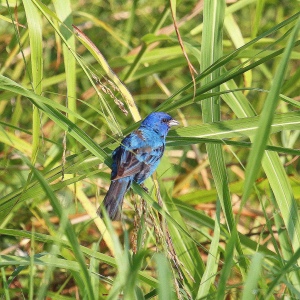 Indigo and Painted Buntings. It seems to be their favorite food. I used to feed a finch mix, but noticed that these two species always plucked out the white millet, so I try to provide what they want. I don’t get many of these birds, seem to just get a few northward bound migrants in April and May. I’ve seen a breeding pair the past couple of year on the upper end of one of our ponds, though.
Indigo and Painted Buntings. It seems to be their favorite food. I used to feed a finch mix, but noticed that these two species always plucked out the white millet, so I try to provide what they want. I don’t get many of these birds, seem to just get a few northward bound migrants in April and May. I’ve seen a breeding pair the past couple of year on the upper end of one of our ponds, though.




